Add Pink To Your Life With These Perky Plants!
Typically we think of plants as green and flowers as "colorful" -- pink, purple, yellow, and more. However, there are a number of plants that have pink foliage, giving them more color throughout the year. So if you're looking for something that adds a bit more interest than a typical green plant, give one of these varieties a try.
Pink Splash Polka Dot Plant
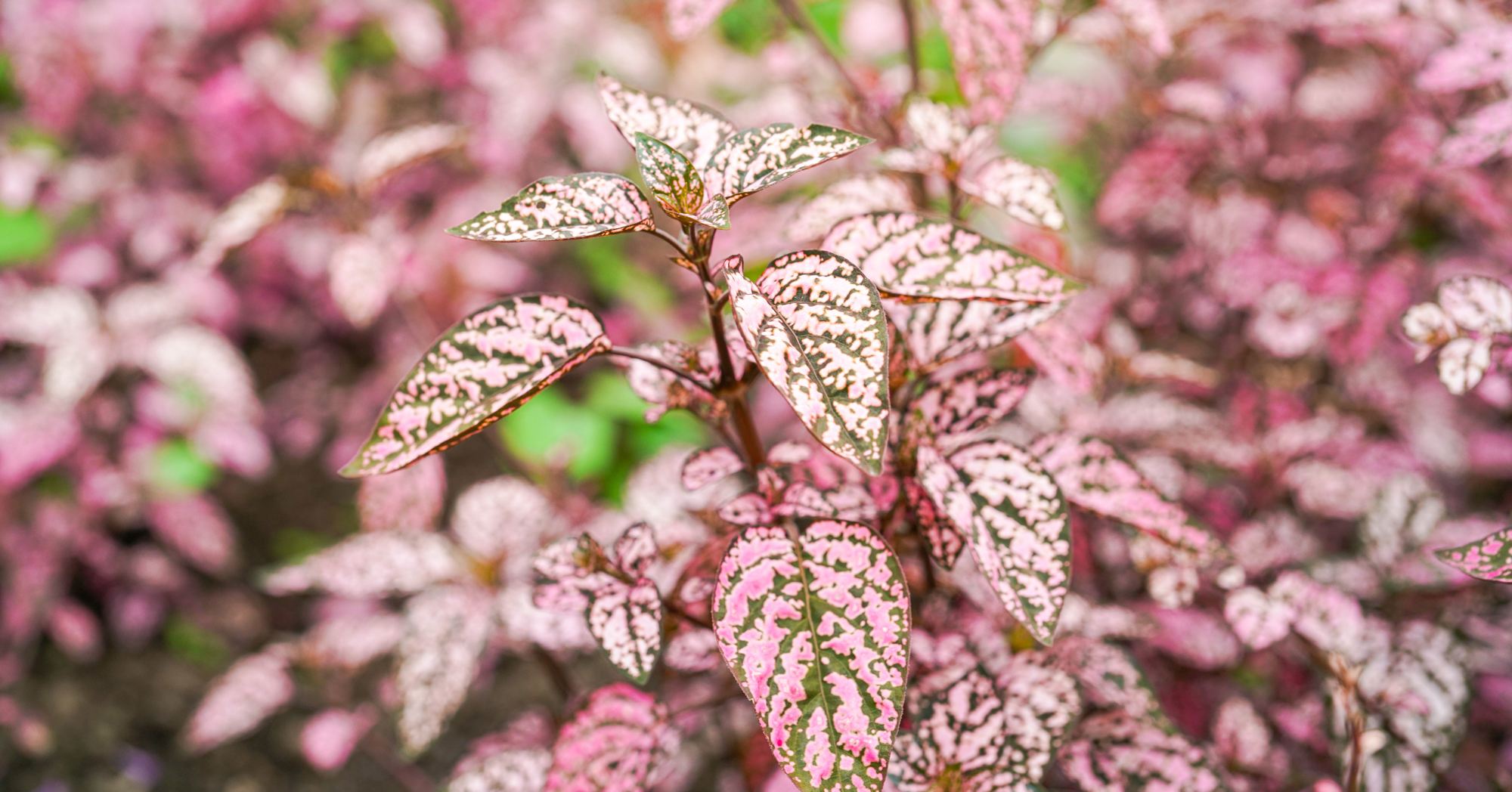
Its full name, Hypoestes phyllostachya 'Pink Splash,' is quite a mouthful, but this spotted plant is sure to add some variety and color to your home. Be sure to give it plenty of bright, indirect light to maintain the color. Polka Dot Plant will benefit from some humidity, so if you live in a dry climate you may want to run a humidifier near the plant.
Graptoveria 'Fred Ives'

If you're a fan of succulents, Graptoveria 'Fred Ives' will be a great addition to your collection. It's bright pinkish-purple leaves are smooth and beautiful. You'll also find this plant propagates easily from leaves and cuttings, so you can easily share them with a friend or just multiply your own collection. It needs very infrequent watering but likes as much light as it can get inside.
Pink Muhly Grass
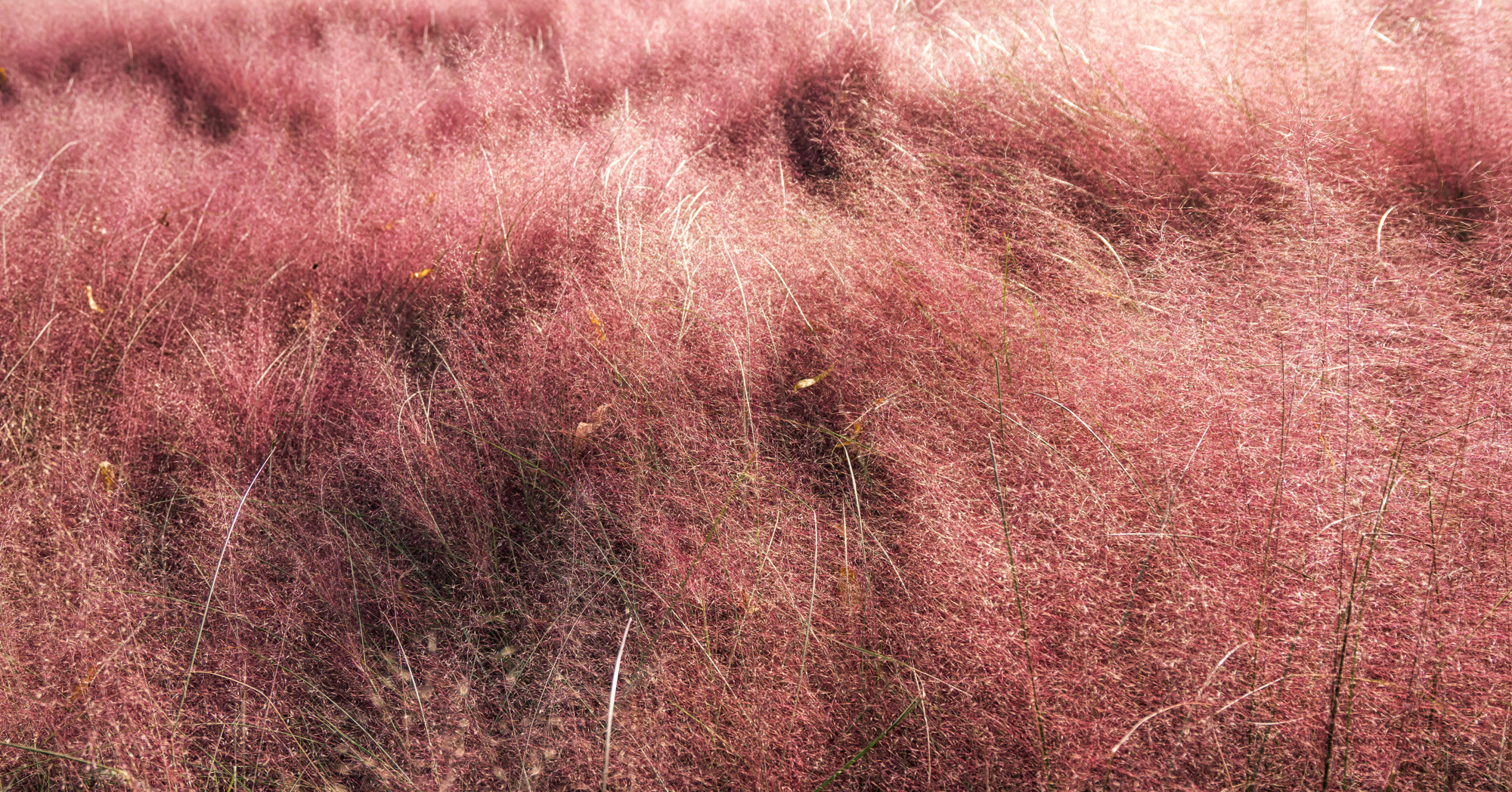
This ornamental grass, Muhlenbergia capillaris (or "Pink Muhly Grass"), is a great addition to an outdoor garden that needs a little extra color. Caring for this cotton-candy-like plant is quite easy and doesn't require a lot of watering or attention. It does need to be planted in full or partial sun and will grow rather quickly.
Japanese Maple
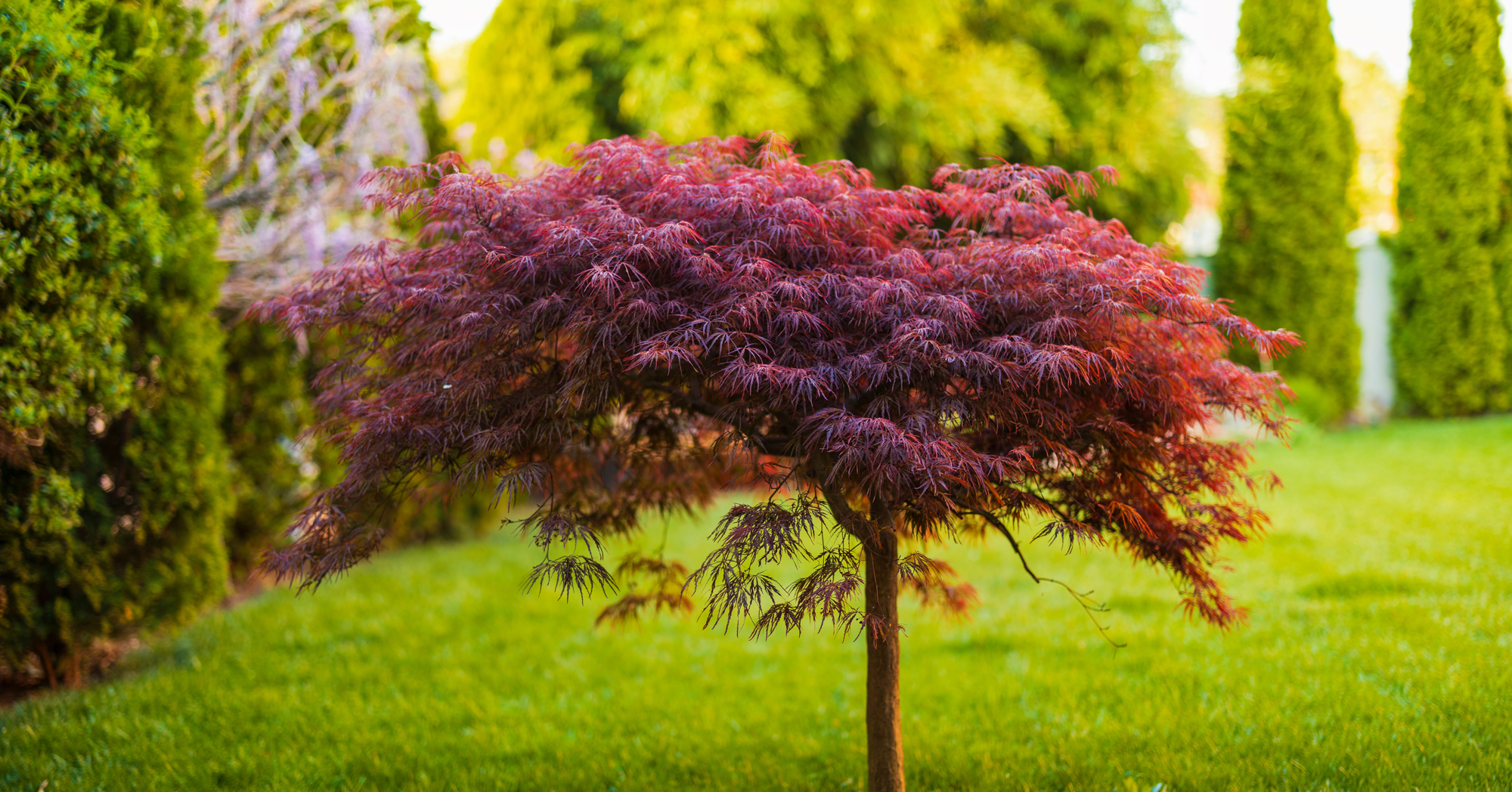
Shrubs and succulents aren't the only pink options for plants. The Japanese Maple tree has delicate purple-pink leaves. Many will get brighter pink foliage in the spring and early summer. In Japanese culture, this tree symbolizes grace, beauty, and peace.
Pink Princess Philodendron
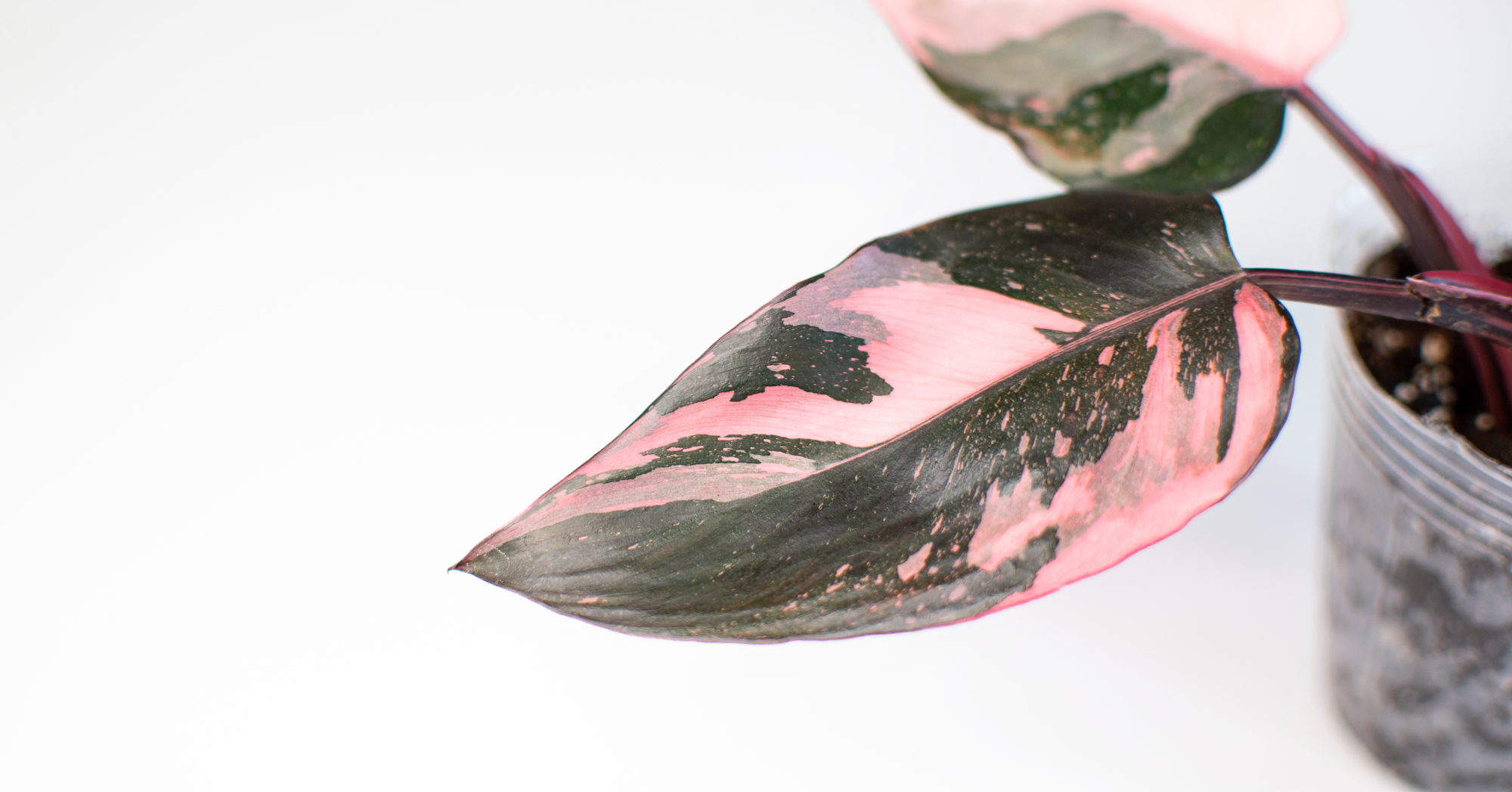
Philodendrons are a popular houseplant, but the 'Pink Princess' cultivar will add more color and life to your home. The pink is perfectly situated on almost heart-shaped leaves, mixed in with deep green and white. If you want your plant to have even brighter pink leaves, make sure you give it plenty of light. More light means more pink!
Anacampseros 'Sunrise'
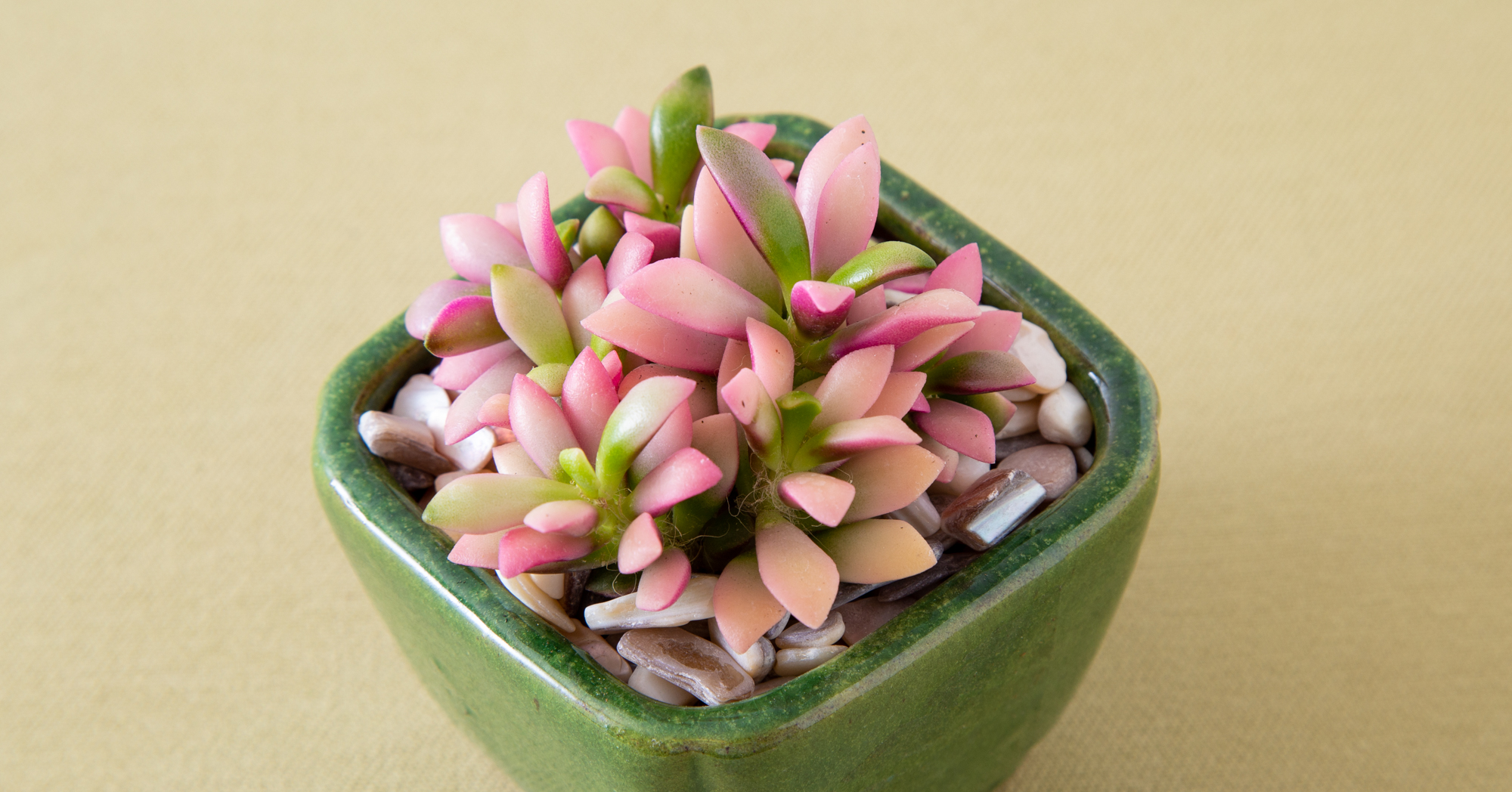
This petite succulent has a beautiful blend of hot pink and green. It forms small mounds with clusters of rosettes in each one. You might notice little white strings between the leaves, which are totally normal. Keep this plant near a bright window to maintain its color.
Pink Beauty Caladium
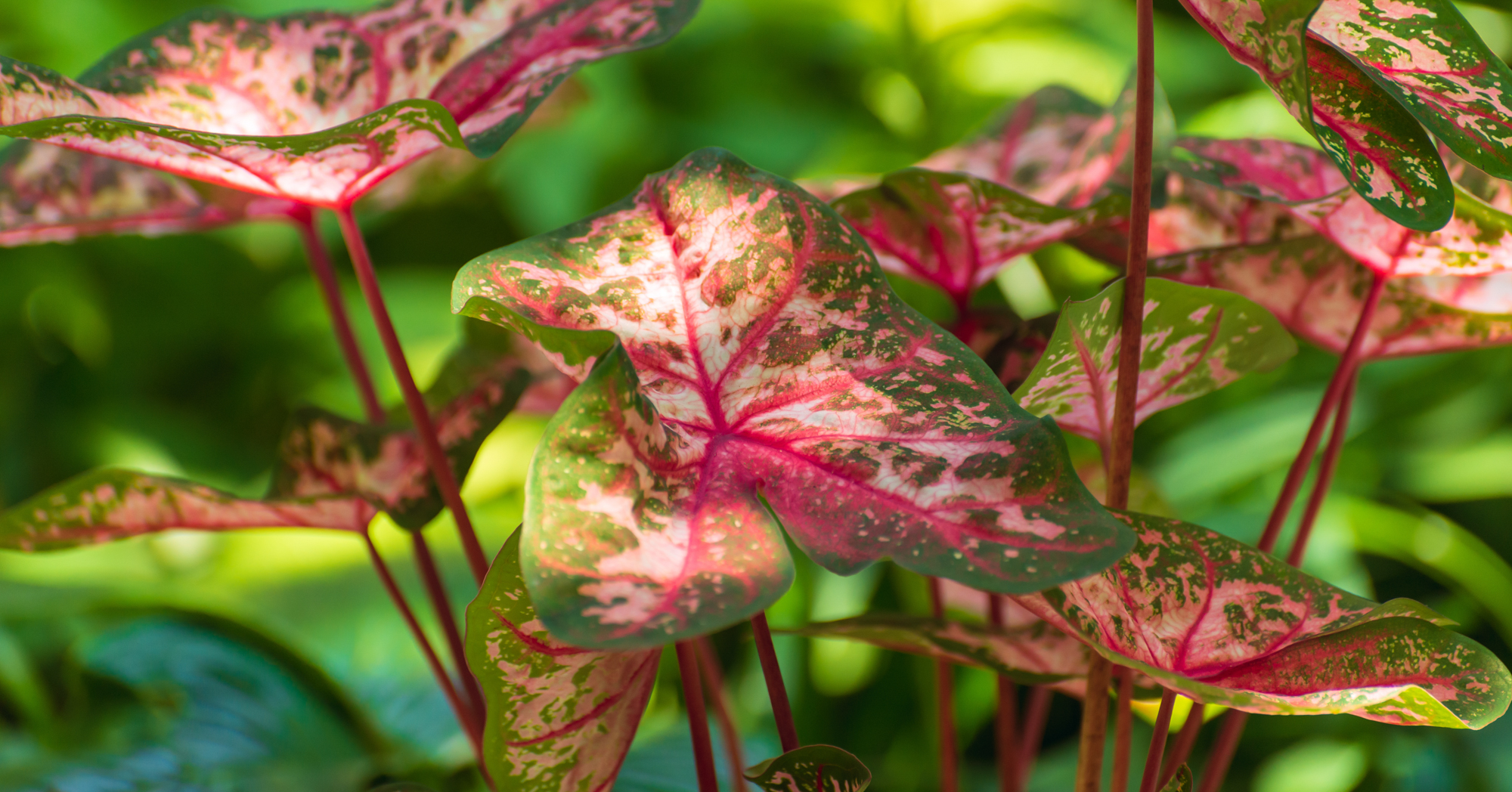
The leaves on Caladium plants almost look like a painting. You'll find ribbons of magenta mixed with lighter pinks and deep greens. This tropical plant is grown for its colorful foliage. They will go dormant in the winter so you may find they don't look quite as picturesque when the weather cools down. However, they'll fully revive and be beautiful and bright again in the spring.
Coleus
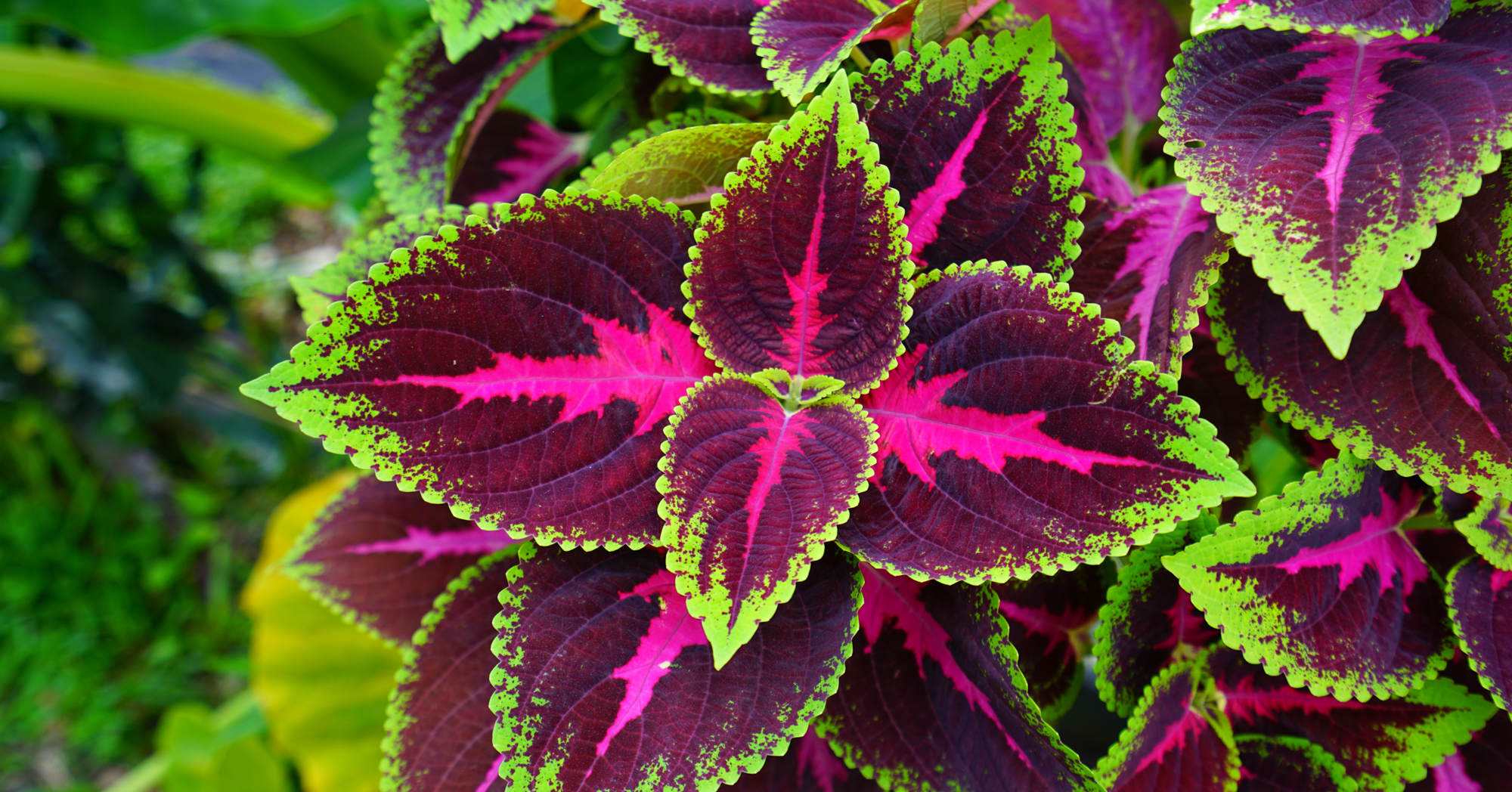
There are many varieties of Coleus with unique colors and patterns. Many of them include vibrant pinks and deep maroons with hints of lime-green. Lighting is really important to keep these plants colorful. You'll notice they change patterns and color intensity if they don't get enough light. Place these near a bright window and consider adding some artificial light if they lose their intense colors.
Echeveria harmsii
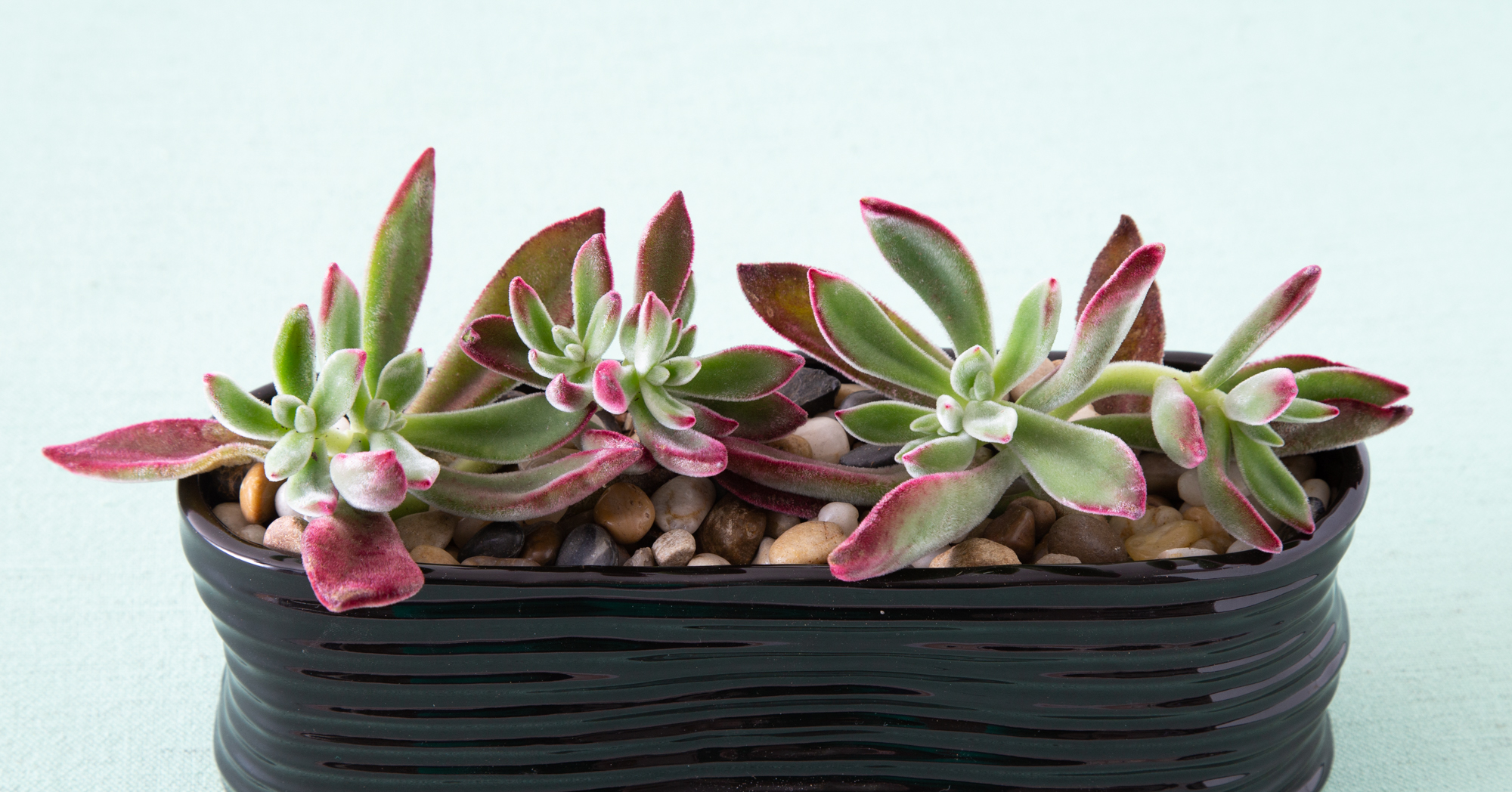
This succulent, also known as "Plush Plant," has hot pink leaves that look and feel a bit fuzzy. It's not uncommon for friends to want to pet the leaves of this plant. In order to maintain the bright pink tips, you'll need to give Plush Plant plenty of sunlight. It doesn't require very frequent watering so it's a great plant if you travel often and don't want to get a plant sitter.
Pink Splash Aglaonema
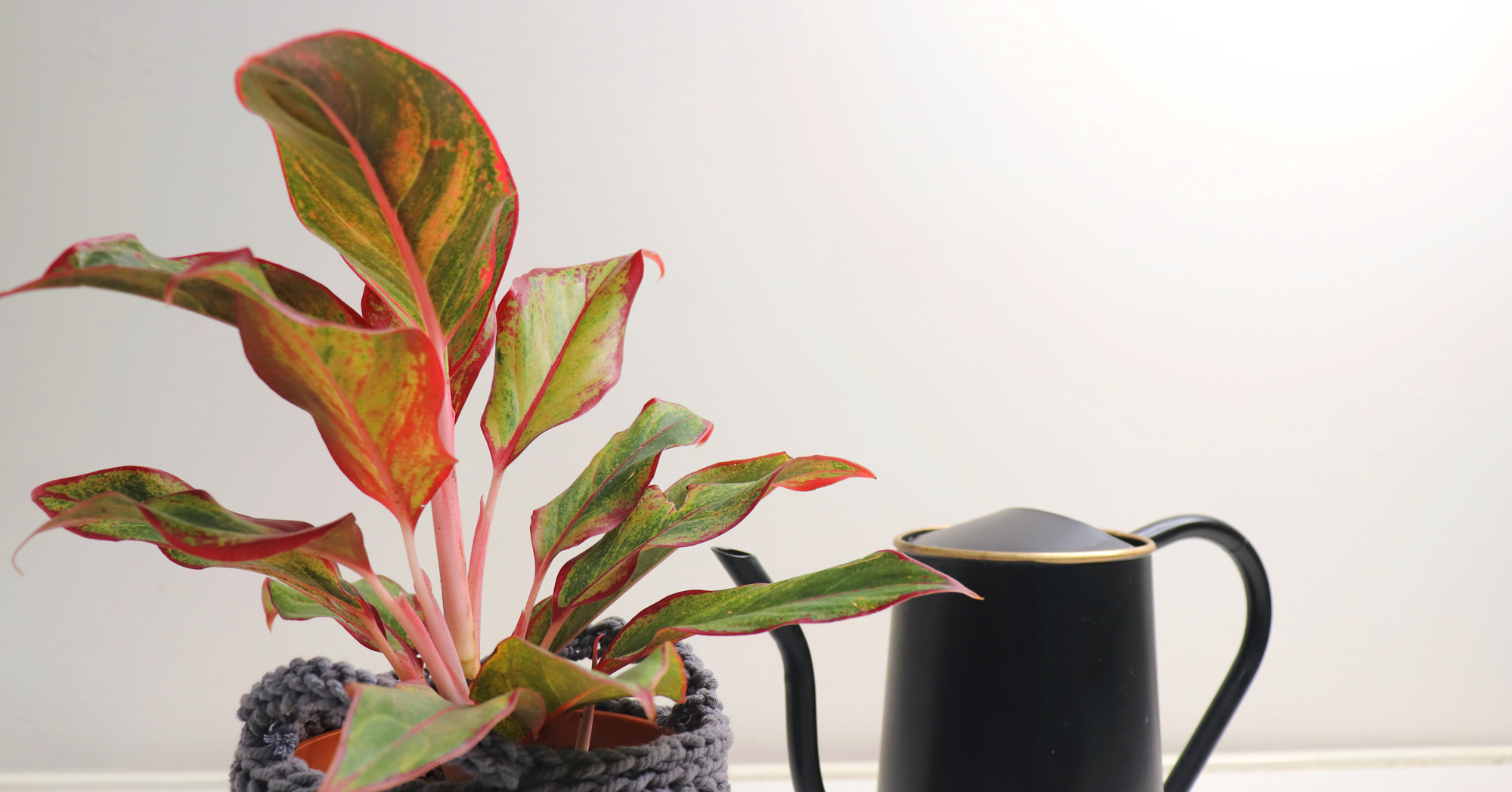
Aglaonema is a popular indoor plant, even if the name is hard to say. The 'Pink Splash' variety has dark green leaves with, you guessed it, splashes of pink all over. The green and pink provide a striking contrast with each other. This plant requires very little maintenance and can generally tolerate low-light conditions, making is a great indoor plant.
Gorgeous, Self-Seeding Flowers You'll Only Have to Plant Once

Growing flowers from seeds is an inexpensive and great way to grow annuals (plants that only live for one year). However, just because you plant them once doesn't mean you'll have to re-plant them each. Some plants self-seed quite easily and will come back year after year with very little effort on your part. Many of these flowers also attract pollinators, such as bees and butterflies, to your garden.
Help Save The Bees By Planting These Flowers In Your Garden
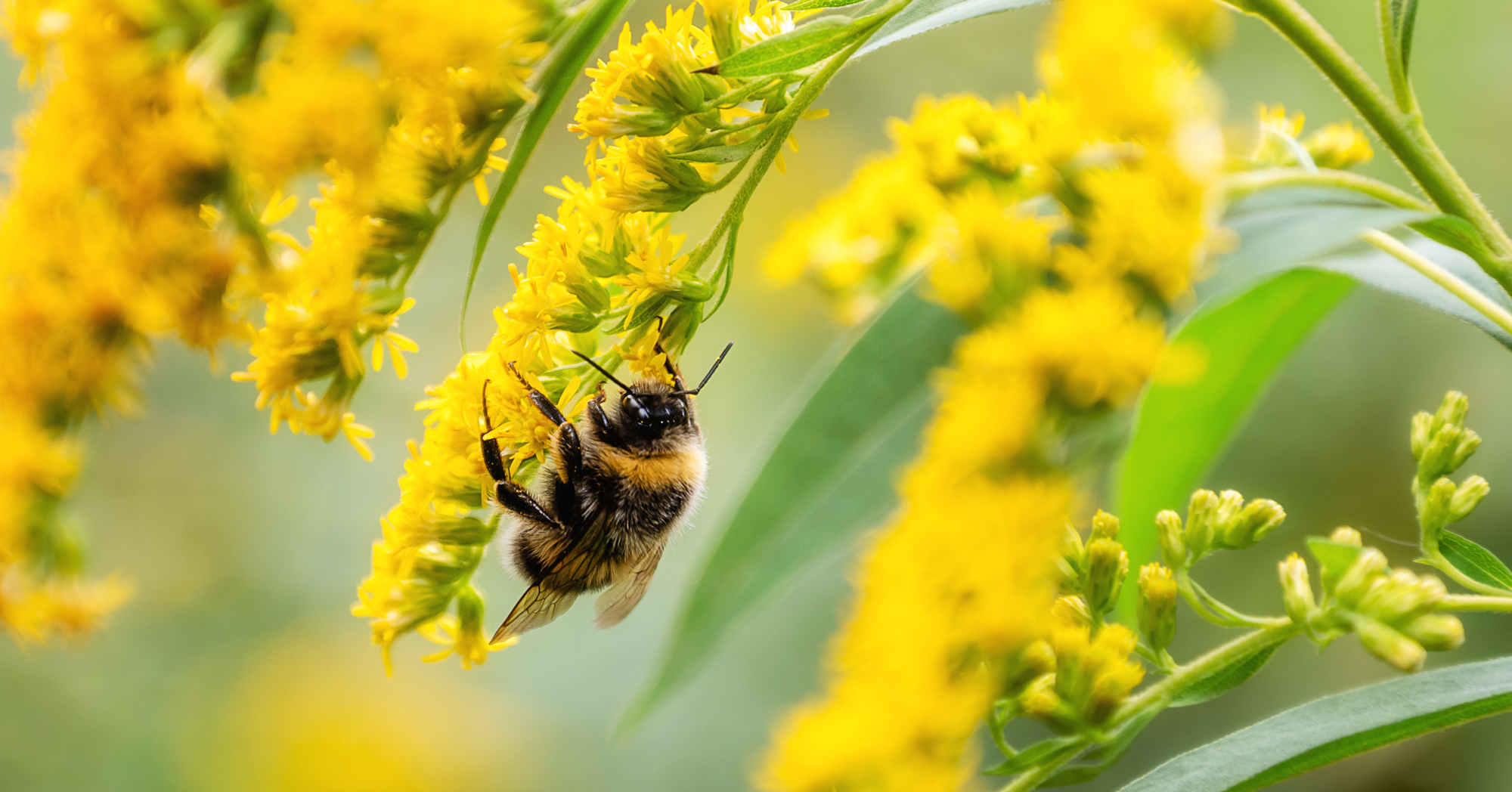
One of the best ways to help the bee population grow is by providing them with plenty of food. You can easily do this by planting bee-friendly flowers in your garden. Also, be sure to avoid using pesticides and make sure there is a water source nearby to help them stay healthy. There are several varieties of plants that are sure to attract bees to your garden and help these busybodies pollinate the fruits and vegetables we love to eat.
12 Popular Plants to Absolutely Avoid Growing In Your Garden

While gardening can be fun, make sure you avoid the plants on this list unless you want a headache. Some plants can become quite invasive, and others have roots that can destroy the foundation of your house or break up sidewalks. Keep these plants out of your garden, and you're on your way to a more pleasant and low-maintenance gardening experience.
Save Your Succulents With This Critical Watering Technique And Look Like A Pro
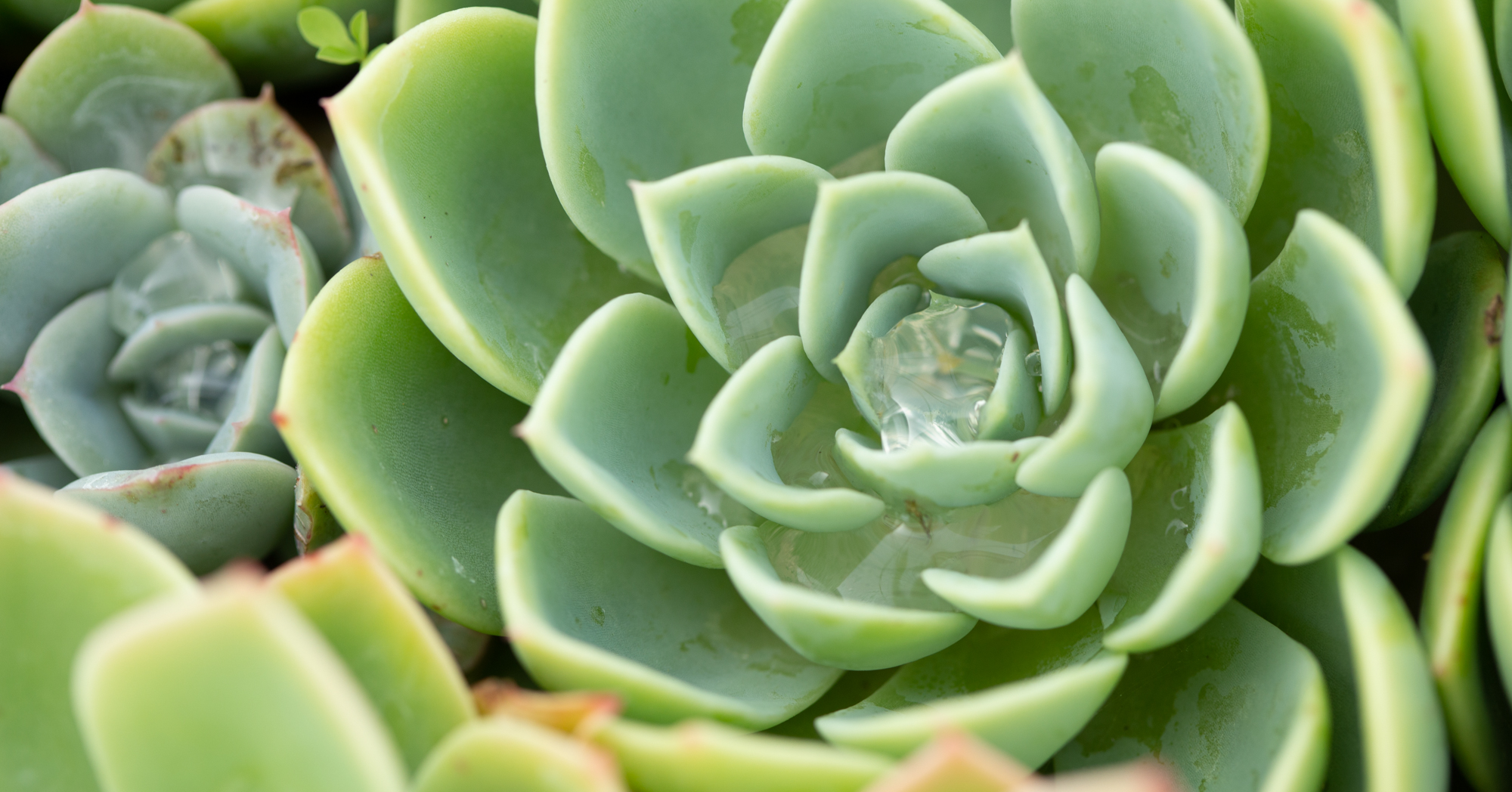
A big part of keeping succulents healthy is providing them with the right environment. You'll want to pay attention to the soil they're in, how much sunlight they're getting, and most importantly, how often you're watering them. The method and frequency of watering succulents are critical to preventing rot while encouraging lots of new growth.
The Worst Gardening Mistakes Beginners Make Regularly

Gardening is a lot of fun but can also be quite overwhelming if you're just starting out. Naturally, new gardeners often learn from what they see more experienced growers doing. Sometimes this can lead to mistakes as beginners don't have the same knowledge and experience. These mistakes can be avoidable, but you have to know what to look for.
This article originally appeared on Succulents and Sunshine.